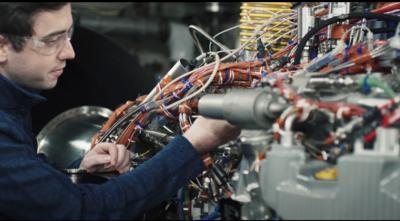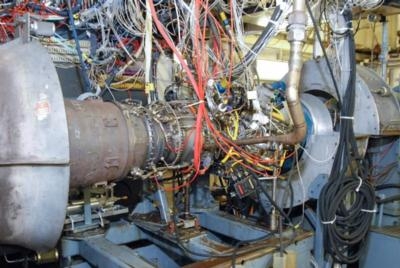Wed, Oct 12, 2022
T901 Shaping Up to Offer 50% Power Bump with 25% Better Fuel Burn
GE Aerospace is on track for next year's T-901 testing program, getting ready to put the next-generation rotorcraft engine through its paces for installation in a range of combat helicopters.

The T901-GE-900 will ultimately power the US Army's UH-60 Black Hawk, the AH-64 Apache, and the upcoming Future Attack Reconnaissance Aircraft (FARA) once ready for duty. The testing process is part of the Engineering and Manufacturing Development (EMD) phase of the Army’s Improved Turbine Engine (ITE) program. Once complete, the program is expected to offer a substantive leap in reliability and performance, boosting performance and minimizing downtime for combat aircraft.
Key to the improvements over legacy engine systems is the simplification of parts made possible through modern additive manufacturing. The rapid advancement of industrial scale 3d printing allows considerable reductions in machining and forging smaller parts, reducing failure points and combining processes for greater resiliency throughout the life of the unit. Combined with a series of modern materials, the resulting engine is proving to be an impressive upgrade over the Army's current helicopter workhorse, the GE T700. The T901 provides 50% more power over its older counterpart, putting out 3,000 shaft horsepower. Army personnel undoubtedly eye the program with excitement at the prospect of once again having their aircraft's full payload capacity even in hot and high climates. Like any modern upgrade, the performance boost comes alongside improvements in fuel consumption, with the T901 boasting 25% greater fuel economy in flight.

“Testing of the first T901 engine was very successful with the engine accumulating more than 100 hours of run time,” said Tom Champion, GE’s T901 Program Director. “We were impressed with the performance and condition of the engine’s compressor, combustor, and turbine sections as well as the 3D-printed (additive) manufactured parts and ceramic matrix composite (CMC) components.”
Under the program, 8 initial T901 engines will be built as a part of the Army's airworthiness certification program, ultimately logging thousands of hours and testing on each before giving them the go-ahead for combat use. So far, the first T901 unit has been put through 1,500 hours of full-scale ground testing for its preliminary flight rating, with nearly 5,000 hours of engine qualification testing, with many more well on the way.
More News
Circle To Runway (Runway Number) Used by ATC to inform the pilot that he/she must circle to land because the runway in use is other than the runway aligned with the instrument appr>[...]
Aero Linx: National Aviation Safety Foundation (NASF) The National Aviation Safety Foundation is a support group whose objective is to enhance aviation safety through educational p>[...]
At Altitude Of About 250-300 Ft Agl, The Airplane Experienced A Total Loss Of Engine Power On November 6, 2024, at 1600 central standard time, a De Havilland DHC-1, N420TD, was inv>[...]
From 2009 (YouTube Edition): Three Hour Flight Was 'Flawless' -- At Least, Until Mother Nature Intervened For anyone who loves the aviation business, this was a VERY good day. Afte>[...]
Also: AMA Names Tyler Dobbs, More Falcon 9 Ops, Firefly Launch Unsuccessful, Autonomous F-16s The Air Force has begun ground testing a future uncrewed jet design in a milestone tow>[...]
 ANN's Daily Aero-Term (05.05.25): Circle To Runway (Runway Number)
ANN's Daily Aero-Term (05.05.25): Circle To Runway (Runway Number) ANN's Daily Aero-Linx (05.05.25)
ANN's Daily Aero-Linx (05.05.25) NTSB Prelim: De Havilland DHC-1
NTSB Prelim: De Havilland DHC-1 Classic Aero-TV: The Boeing Dreamliner -- Historic First Flight Coverage
Classic Aero-TV: The Boeing Dreamliner -- Historic First Flight Coverage Airborne-NextGen 05.06.25: AF Uncrewed Fighters, Drones v Planes, Joby Crew Test
Airborne-NextGen 05.06.25: AF Uncrewed Fighters, Drones v Planes, Joby Crew Test




